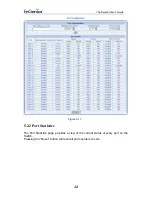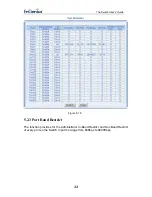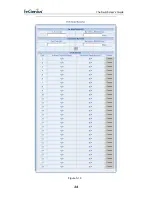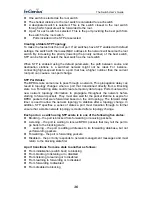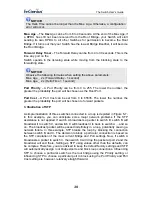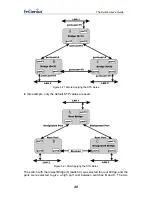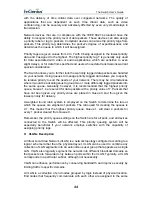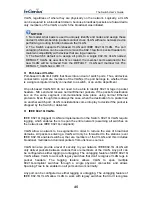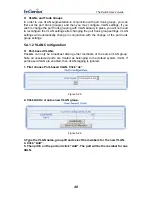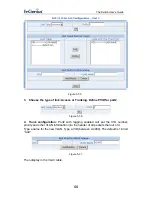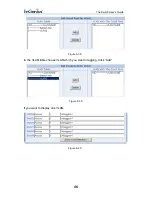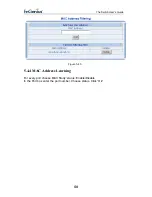
The Switch User’s Guide
VLAN, regardless of where they are physically on the network. Logically, a VLAN
can be equated to a broadcast domain, because broadcast packets are forwarded to
only members of the VLAN on which the broadcast was initiated.
NOTICE:
1. No matter what basis is used to uniquely identify end nodes and assign these
nodes VLAN membership, packets cannot cross VLAN without a network device
performing a routing function between the VLAN.
2. The Switch supports Port-based VLAN and IEEE 802.1Q VLAN. The port
untagging function can be used to remove the 802.1 tag from packet headers to
maintain compatibility with devices that are tag-unaware.
3. The Switch's default is to assign all ports to a single 802.1Q VLAN named
DEFAULT_VLAN. As new VLA N is created, the member ports assigned to the
new VLAN will be removed from the DEFAULT_ VLAN port member list. The
DEFAULT_VLAN has a VID = 1.
z
Port-based VLANs
Port-based VLAN limit traffic that flows into and out of switch ports. Thus, all devices
connected to a port are members of the VLAN(s) the port belongs to, whether there
is a single computer directly connected to a switch, or an entire department.
On port-based VLAN.NIC do not need to be able to identify 802.1Q tags in packet
headers. NIC send and receive normal Ethernet packets. If the packet's destination
lies on the same segment, communications take place using normal Ethernet
protocols. Even though this is always the case, when the destination for a packet lies
on another switch port, VLAN considerations come into play to decide if the packet is
dropped by the Switch or delivered.
z
IEEE 802.1Q VLANs
IEEE 802.1Q (tagged) VLAN are implemented on the Switch. 802.1Q VLAN require
tagging, which enables them to span the entire network (assuming all switches on
the network are IEEE 802.1Q-compliant).
VLAN allow a network to be segmented in order to reduce the size of broadcast
domains. All packets entering a VLAN will only be forwarded to the stations (over
IEEE 802.1Q enabled switches) that are members of that VLAN, and this includes
broadcast, multicast and unicast packets from unknown sources.
VLAN can also provide a level of security to your network. IEEE 802.1Q VLAN will
only deliver packets between stations that are members of the VLAN. Any port can
be configured as either tagging or untagging. The untagging feature of IEEE 802.1Q
VLAN allows VLAN to work with legacy switches that don't recognize VLAN tags in
packet headers. The tagging feature allows VLAN to span multiple
802.1Q-compliant switches through a single physical connection and allows
Spanning Tree to be enabled on all ports and work normally.
Any port can be configured as either tagging or untagging. The untagging feature of
IEEE 802.1Q VLAN allow VLAN to work with legacy switches that don’t recognize
45
Содержание ESW-8228
Страница 22: ...The Switch User s Guide NOTICE The factory default User name is guest Pass word is guest 22...
Страница 34: ...The Switch User s Guide Figure 5 19 34...
Страница 49: ...The Switch User s Guide 49...
Страница 53: ...The Switch User s Guide Figure 5 33 2 Choose port2 to enter into VLAN configuration The default PVID is 1 53...
Страница 54: ...The Switch User s Guide Figure 5 34 54...


